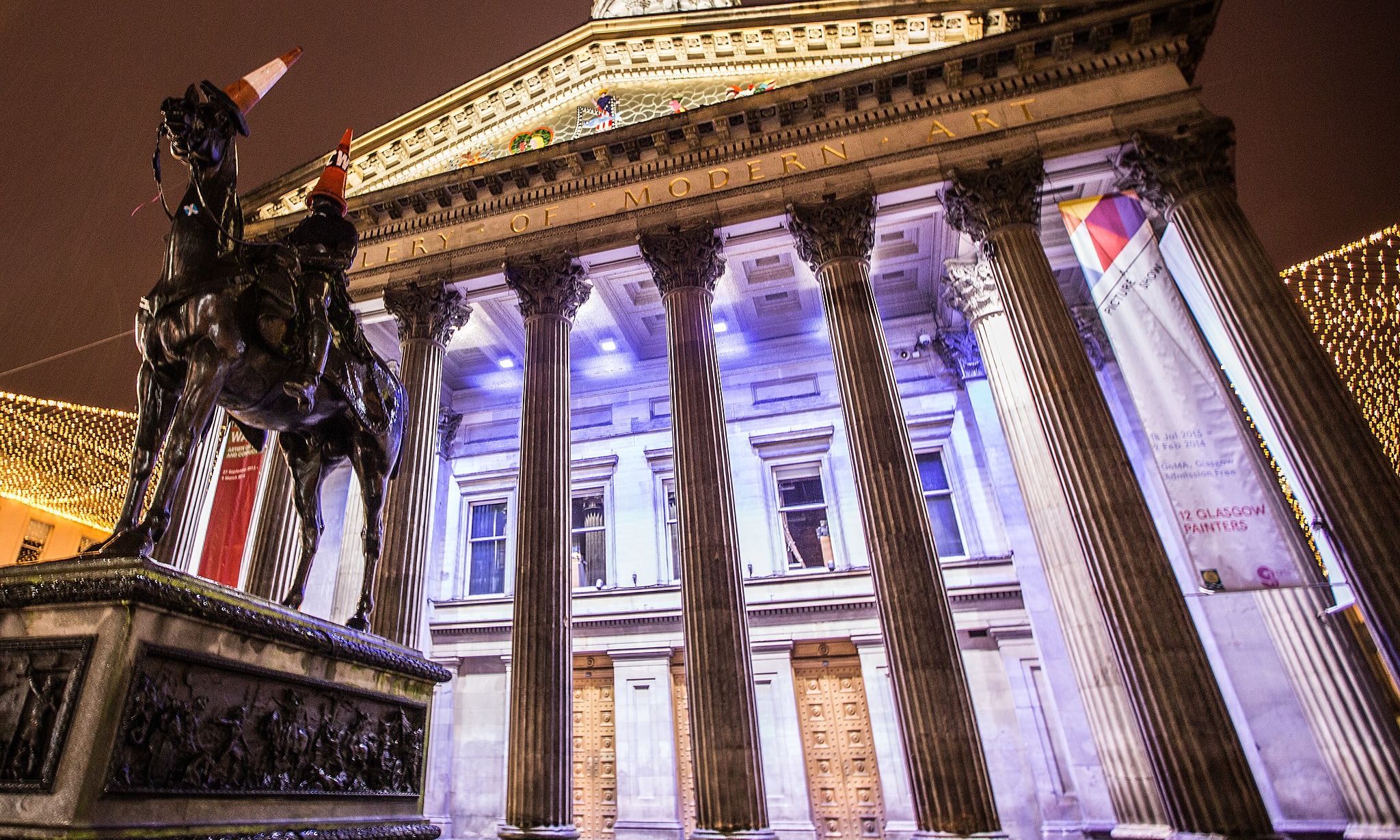Gallery of Modern Art in Glasgow
A new focus group has been launched by the Art Fund and London Gallery Weekend (LGW) with the aim of building better connections and pooling resources between London galleries and regional museums, which have been particularly hard hit by budget cuts, soaring energy bills and fewer visitors since the pandemic.
The group’s first meeting took place after last year’s LGW. Participants included some of the leading names in the public and private sectors such as Deborah Smith, the director of the Arts Council Collection; Nicholas Thornton, the head of fine and contemporary art at the National Museum Wales; Sarah Horner, the director of exhibitions at Galerie Max Hetzler; and Laura Lord, a director at Sadie Coles gallery. The group will meet again this month, with a different cohort of gallery and museum representatives.
“Things are incredibly tough across the UK,” says the Art Fund director Jenny Waldman. “It’s not that public museums and galleries based in London are having an easy time by any means, but outside of London the sources of income are fewer.”
Waldman notes how fundraising for regional museums is also a lot more challenging. “For those in London there is community of patrons and collectors that are in the city,” she says. “It’s quite noticeable that outside of London it is more difficult to raise those additional funds that are so vital to the museums being able to put on fantastic exhibitions, being able to commission artists and being able to collect artists’ work.”
Some regional museums operate without boards of trustees or patron schemes, while others, which fall under the jurisdiction of local or national authorities, are unable to set budgets in advance which can lead to a lack of momentum.
Speaking during last year’s meeting, Katie Bruce, the curator at the Gallery of Modern Art in Glasgow (GoMA) said: “We sometimes lack the confidence to knock on doors ourselves as we’re quite aware of how slow some of our museum processes can be and we’re wary about approaching certain artists or galleries because of our timeframes and budget […] We realise that conversations can be slow and sometimes the pace of working with commercial galleries can appear quite fast.”
Other perceived barriers to collecting for museums include practical concerns such as storage, conservation, the costs of reinstalling works, shippings and inviting international artists to visit.
Galleries, meanwhile, suggest that greater transparency from museums around their programming and acquisitions policies would be beneficial so that galleries could be more constructive about how the approach curators. As LGW co-founder Jeremy Epstein says: “Galleries are a huge potential resource for institutions through the many background roles we play on behalf of our artists—as archive keepers, production managers and developers of artists’ audiences. A more open forum for communication between institutions and galleries could allow a mutual sharing of resources in a way that would benefit both artists and the public.”
The group was also concerned about how to avoid conflicts of interest, for example, how a gallery might support a touring exhibition without too much interference. As Sarah Horner, the director of exhibitions at Galerie Max Hetzler, put it: “How do we engage with [museums] in a way that is collaborative so that our support is not perceived as furthering a curatorial agenda?”
Bruce noted how GoMA had been working with a commercial gallery to host a touring show in 2003 which fell through as “the loans and the different timescales between us weren’t possible”. She added: “We thought we could be far more fluid and flexible, whereas the reality was that we couldn’t. We became a lot more self-generative in staging shows, but this has impacted the number of touring exhibitions we’re staging and we would like to revisit how we can collaborate with commercial galleries more successfully going forward.”
Collectors gifting works to museums is becoming more and more common, and can benefit collections greatly. But, particularly when it comes to red-hot artists, this practice is sometimes used by collectors to gain access to museums in order to benefit their own collections. One of the questions raised by the focus group was how to make sure that this practice is “truly altruistic”.
Another area explored by the group was the idea of jointly programming as well as jointly acquiring works, following the partnership established between the National Gallery in London and the J Paul Getty Museum in Los Angeles to jointly purchase Joshua Reynolds’ Portrait of Mai. Each museum shared the £50m cost, with the UK money coming from the National Heritage Memorial Fund (£10m) and £2.5m from the Art Fund.
However, as important as acquisitions are, one of the ultimate aims of the focus group is to move beyond the transactional and to focus on the art sector as an ecosystem.
As LGW co-director Sarah Rustin puts it: “[The focus] doesn’t have to be limited to acquisitions and exhibition plans, there are so many other ways in which the commercial sector can support museums that go beyond monetary aid. It could be through offering assistance to their content team, support with the catalogue, production, design work, communications and press, and all sorts of other resources. Some institutions simply don’t have teams in-house for these, unlike many commercial galleries.”
• The Art Newspaper is a media partner of London Gallery Weekend

